From Paintbrush to Pixels
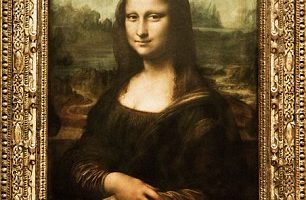
Masterpieces delivered on-demand!
I traveled all the way to France, and I didn’t even get to see it. I stood on my tippy-toes. I stretched my phone into the air to take a selfie. But the gawking gaggle of tourists blocked my path to finally understanding what all the fuss was about. After an eternity of waiting for an opening, I gave up. And as I begrudgingly trudged toward the almost-as-famous statue of Aphrodite, I told myself that it didn’t matter I had walked 40 minutes in the rain from my hotel to the Louvre: the Mona Lisa was overrated anyway.
My above experience represents many people’s attempts to see some of the world’s greatest works of art. Adding to my frustration is the fact that the works are strewn throughout the world. And while I’ve made attempts to attend at least one museum every place I’ve traveled, there are so many masterpieces that I haven’t even come close to seeing … until now.
The Digitization of Art
Thanks to a novel push by many the world’s museums, the Mona Lisa in high-definition is just a click away. In contrast to my initial attempt to meet Mrs. Lisa, now I can analyze every one of Da Vinci’s brushstrokes and see the micro-cracks in the paint.[i]
Holbein’s The Ambassadors has always been one of my favorite pieces. And the National Gallery’s super high-definition scans have allowed me to see more details that I could have ever expected.
Even presidential portaits are getting the digital treatment!
People of the future are going to know exactly what our leaders looked like. Sorry Donald!
Not anything new
This new technology stretches across millions of the major works within the world’s best museums, including the Louvre, the Smithsonian, the National Gallery, and many others. The Smithsonian alone is currently working to digitally catalog over 14 million pieces![v]
But this is nothing new; museums have long been at the forefront of digitization. The first museum audio tour was introduced in 1952.[vi] In 1995, the International Council of Museums released an official statement that urged museums to start using the internet, way before the world knew just how big of a role the internet would play in everyone’s daily life.[vii]
Other uses of digitization
One of the most obvious benefits of the new imaging technology is that anyone can access the images from around the world. This allows more people to see and analyze the works, facilitating more complete discussion and crowdsourcing research. Finally, the museums have a chance to deliver artistic education to anyone with a computer and an internet connection.
It also presents commercial opportunities. The Rijksmuseum, for example, was one of the first to release its images for free so that they could be printed on iPhone cases, pillows, handbags, and other accessories.[viii] The museum administration’s thoughts were that people were going to pirate the images anyway, so why not provide the images in high definition?
Finally, the new methodologies have proven to solve long-standing disputes over artifact ownership. Recently, the Smithsonian managed to return artifacts to Native American burial grounds because the scans were so high definition, that the 3D-printed replicas were identical to the real things. The Native American tribes were so impressed, that many requested a few copies for themselves![ix]
Finally, by maintaining high-definition scans of the world’s greatest works, the artistic community is guaranteeing that cultural heritage continues to exist even physical manifestations are one day destroyed either by natural disaster or human malice. For example, when the Taliban demolished the Buddhas of Bamiyan in 2001, the physical works were lost forever. But the existence of high definition photographs, allowed the statues to be resurrected with light. See below:
Potential Downsides
One of the potential downsides is that people may believe that a digital image is a substitute for seeing the real thing. But overall, this has proven not to be the case, as museum attendance continues to reach new highs around the globe.[xi] Perhaps greater access and broader education merely whets and doesn’t satiate the human desire for art and creativity.
[Word Count: 683]
SOURCES:
[i] The Louvre, “Mona Lisa – Portrait of Lisa Gherardini, wife of Francesco del Giocondo,” http://www.louvre.fr/en/oeuvre-notices/mona-lisa-portrait-lisa-gherardini-wife-francesco-del-giocondo/, accessed November 2016.
[ii] Google Arts & Culture, “The Ambassadors,” https://www.google.com/culturalinstitute/beta/asset/the-ambassadors/bQEWbLB26MG1LA, accessed November 2016.
[iii] Smithsonian Institution, “Smithsonian Creates the First-ever 3D Presidential Portrait,” https://dpo.si.edu/blog/smithsonian-creates-first-ever-3d-presidential-portrait, accessed November 2016.
[iv] US Magazine, “Why Are THere Naked Donald Trump Statues All Over the United States?,” http://www.usmagazine.com/celebrity-news/news/why-are-there-naked-donald-trump-statues-all-over-the-us-w435180, accessed November 2016.
[v] Smithsonian Magazine, “What Digitization Will Do for the Future of Museums,” http://www.smithsonianmag.com/smithsonian-institution/what-digitization-will-do-for-the-future-of-museums-2454655/, accessed November 2016.
[vi] Ross Parry, “Recoding the Museum: Digital Heritage and the Technologies of Change,” https://books.google.com/books?id=02R_AgAAQBAJ&pg=PT165&lpg=PT165&dq=ICOM+policy+statement+1995+internet&source=bl&ots=LPcJ6s25nO&sig=TbZNPrdMo_SpH4Sg2xm32rmLOb4&hl=en&sa=X&ved=0ahUKEwiRhaGnj7HQAhXrwlQKHdNYD_8Q6AEIGjAA#v=onepage&q=audio%20tour&f=false, accessed November 2016.
[vii] Museum Whisperings, “Audio Tour Etiquette,” https://lyndalllinaker.wordpress.com/2016/05/10/audio-tour-etiquette-in-museums-and-galleries/, accessed November 2016.
[viii] New York Times, “A Museum at the Forefront of Digitization,” http://www.nytimes.com/2015/05/14/arts/international/a-museum-at-the-forefront-of-digitization.html?_r=0, accessed November 2016.
[ix] Smithsonian Magazine.
[x] Wonderful Engineering, “Afghanistan’s Buddha Statues Destroyed By Taliban Get Another Life With 3D Lasers,” http://wonderfulengineering.com/afghanistans-buddha-statues-destroyed-by-taliban-get-another-life-with-3d-lasers/, accessed November 2016.
[xi] Rijksmuseum, “Rijksmuseum sees record attendance in 2014,” https://www.rijksmuseum.nl/en/press/press-releases/rijksmuseum-sees-record-attendance-in-2014, accessed November 2016.


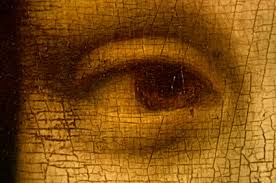

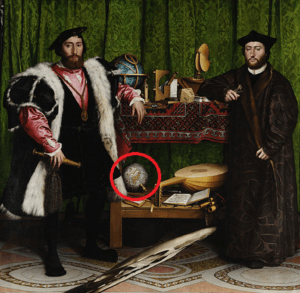
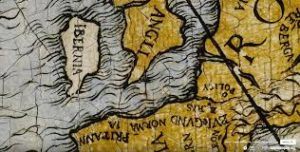
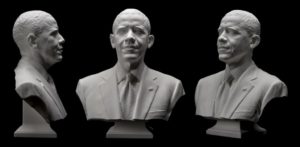

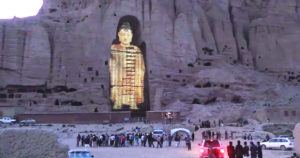
While I completely agree there are numerous merits to this program – from decreasing art education costs to the return of Native American artifacts – I can’t help but to think that this is not even close to a real substitute. Not only are you viewing it from a screen, already adding another degree of separation from the artwork, but you take the consumer out of the overall context of viewing art in a museum. The ability to see masterworks with your own eyes, among other art aficionados whom you can converse with in person, cannot be replicated through digital media. So while there is certainly a market for digital art, I have doubts that this will ever truly substitute or alter the operations of traditional art galleries and museums.
I really love the value of digitization in terms of restoring and renovating destroyed pieces of art. I would love for this to be extended to world heritage sites, like the Pantheon, or Palmyra. Digitization allows a scarce resource (physical proximity to a piece of art) to become unlimited, giving all internet users access to a personal and up-close experience with any uploaded pieces of art. Perhaps in the future we would be able to simulate the tactile nature of art in additional to the visual nature, so that people could interact with 3D recreations of items without causing worry of destruction of art objects, and allowing museums to function without risk of theft.
One of the core advantages of digitization of art is open access of fine arts to under-served population. It is true that famous Mona Lisa is difficult to see even when you are in Louvre, but there are a large majority of global population who do not have the privilege to travel to Paris to see the artwork in person. Thus, providing digital representation of famous artworks provides new opportunities and perspectives to many who will not have access to the artwork in the first place.
This is a really interesting topic.
When I was an art major in college, I had to write papers about and reference pieces of art that I did not always have access to. High quality digital photos really can do amazing things for artists and researchers around the globe. However, there is an aspect of art, even paintings, that doesn’t yet translate to the screen. The technique of glazing with oils, for example, which many of the great painting masters used, involves using the luminescence of the white canvas to create an almost “glowing” effect, especially seen on skin and backgrounds in paintings. It is very reliant on the lighting chosen by the museum. I have yet to see a photo that replicates this effect quite right, and indeed the lighting of the canvas in a photo can completely change one’s interpretation of the tone and technique. But I am optimistic that the technology will continue to improve and I think it’s a really great thing that so much art is now globally accessible.
Interesting article! It’s clear the value that digitalization has in allowing more people to have access to fine arts but i’m wondering if the possibility of accesing this pieces is useful without a complimentary education. From my experience visiting popular artwork in museums, I feel that most of the people goes to see this artworks as part of a checklist item without a deep understanding of what they are seeing, therefore the online access should be complemented with guidance on how to analyze this artworks to ensure that museums are building knowledge.